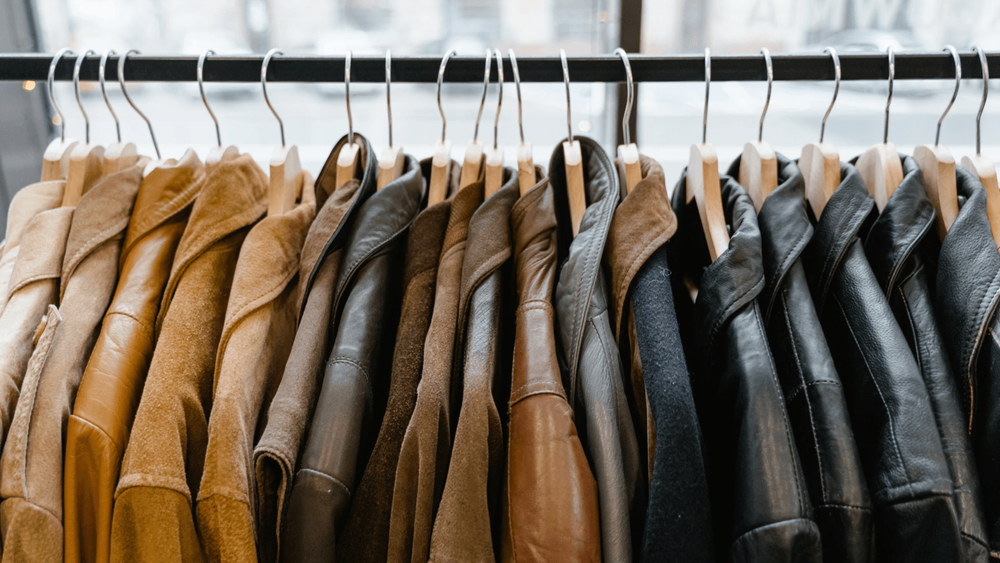Can vegans wear second-hand leather? Is leather a byproduct?
Veganism is a way of life that rejects exploiting and harming animals (human and non-human). How does second-hand leather fit within this framework? What do you do with leather bought or inherited before you turned vegan?
Animal skin or leather is already second-hand, even if you’re buying a ‘new’ leather jacket, but for this article, second-hand relates to the term commercially.
Perspectives
Vegans who do not use second-hand leather adhere to the Vegan Society’s definition of veganism, since leather isn’t vegan, they won’t use it. For some, wearing the skin of another, regardless of how long ago it was produced, would never sit right because they cannot disassociate from the suffering inflicted on the animal to make the product in the first place.
It’s safe to assume that vegans do not purchase ‘new’ leather; however, some wear vintage leather rather than throw it away. Arguments against this suggest that wearing any leather is hypocritical, but counter-arguments point to the hypocrisy of throwing something away, which goes against being sustainable. Discarding all leather in circulation would increase landfill pollution, producing methane and carbon dioxide, so some vegans use second-hand leather to reduce items ending up in landfill. Suggestions for vegans who possess leather include giving it to charity, but is that morally any different from wearing it yourself, as it will still be used?
Double Vegan Checker argues that wearing vintage leather contributes to market demand, “if indirectly”, as it normalises the use and can influence trends; however, that may be an outdated sentiment as consumers are demanding sustainable and ethical products and swapping animal products with faux materials, with the synthetic market expected to reach 66.84 billion USD by 2030, according to a new report by Grand View Research. However, many synthetic alternatives contain plastics and are non-environmentally friendly.
Is leather a byproduct? Public misconception
The general public is often told that leather is a byproduct of the meat industry, so animal skin would go to waste if not used. But this misconceived justification is simply not true, as many animal species are predominantly slaughtered for their skin, not meat. Ostrich skins account for some 80% of the slaughtered bird's value. Kangaroo farms supply skin to Nike, Adidas, and Puma.
Unfortunately, the term ‘leather’ normalises violence as it is associated with it being a byproduct, which “hides the reality”. The Guardian suggests using the word ‘subsidy’ instead of ‘byproduct’, which makes sense considering the market value of the leather industry exceeds 80 billion USD per year, and over a billion animals are killed on factory farms primarily for their skins every year, including pigs, goats, crocodiles, and snakes, to name a few.
The leather industry violates human rights
Commercialising hides into leather involves human rights violations against leather tannery workers, including children as young as 11 working under hazardous conditions. The leather industry cheap labour, whereby many workers have no access to healthcare and receive no living wage.
Most leather is tanned with chemicals like chromium (90%), formaldehyde and arsenic, resulting in people working in or living near tanneries suffering from health issues, including cancers, skin disease, child developmental issues, and mental health illness. China has 'cancer villages’ caused by heavy metal pollution (arsenic, lead, mercury and chromium) from the area's tanneries.
Environmental impact of leather
Whether leather is regarded as a by-product, co-product, or sub-product of the meat industry, animal agriculture is bad for the planet. To turn skin into leather, it must go through wasteful and environmentally damaging processes, as “leather production uses high amounts of chemical agents and water”, resulting in “greenhouse gases, high amounts of solid waste, and high organic loads in the wastewater.” For every metric tonne of rawhide tanned, only 20% is transformed into leather.
So, can vegans wear second-hand leather?
Like many of life’s questions, there are no binary answers here. In an ideal world, there would be no slaughter and no leather. Still, in a time of austerity and the climate crisis, which is wiping out creatures in the midst of destroying the environment, there are valid points for not throwing away second-hand or vintage leather. And there are valid reasons for not wanting to use any leather.
It’s doubtful any vegan would purchase ‘new’ leather, and when it comes to using vintage leather, some vegans use it, and some don’t.
Alexandre Valente, from Vegan Foundry, makes a compassionate conclusion on the topic: “Personally, I believe that despite your choice, you should not be judged. Whether you want to wear second-hand leather or not use any leather at all, you’re already making a huge contribution by NOT purchasing brand-new animal products and increasing its demand.”
Read more information on the environmental impact of animal agriculture and check out 5 plant leather alternatives for vegans and environmentalists.
